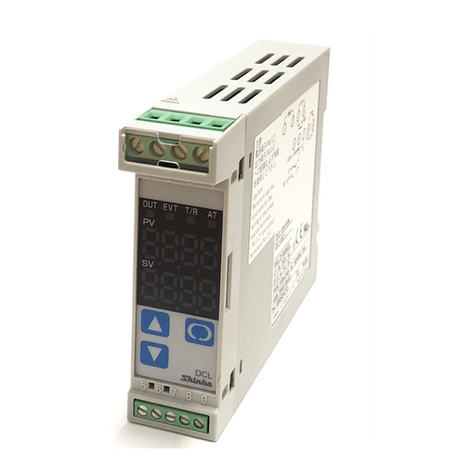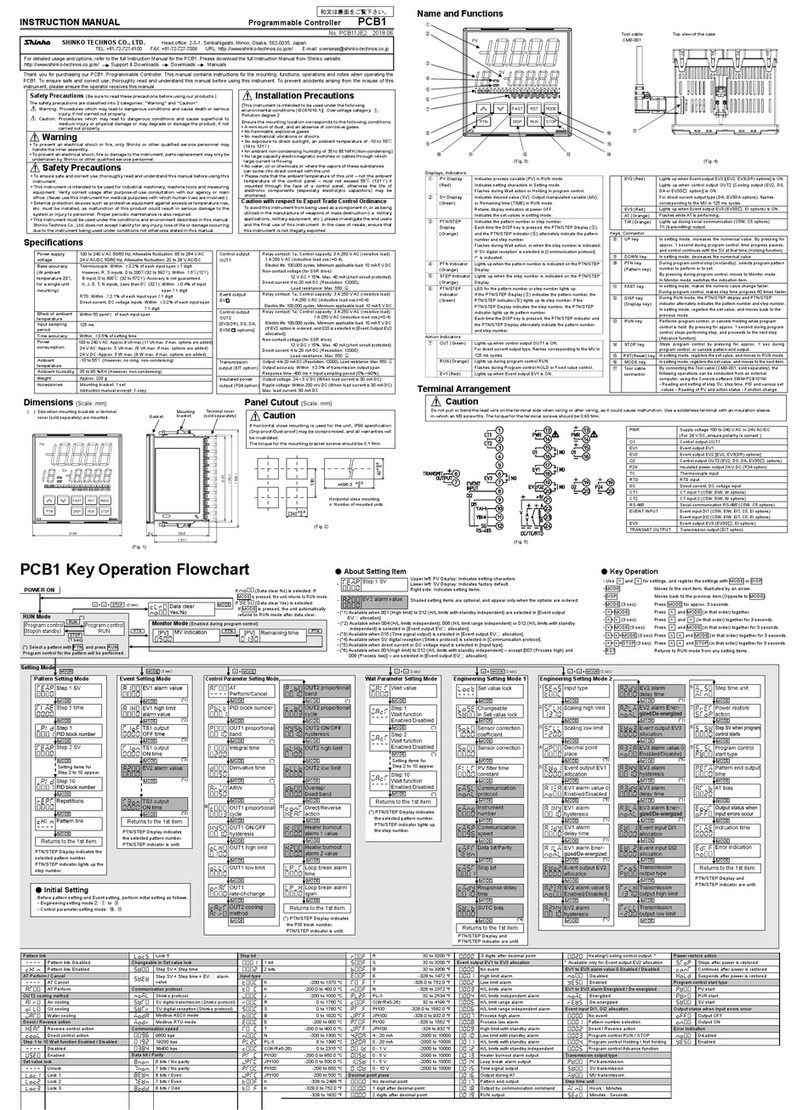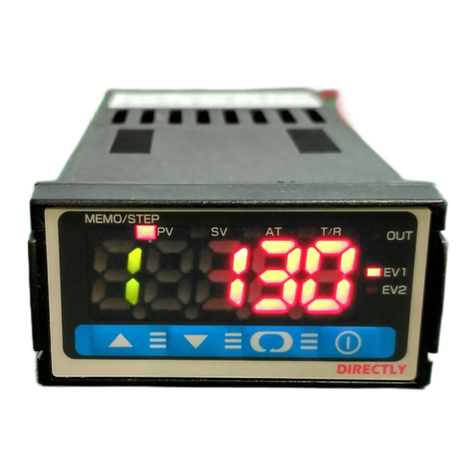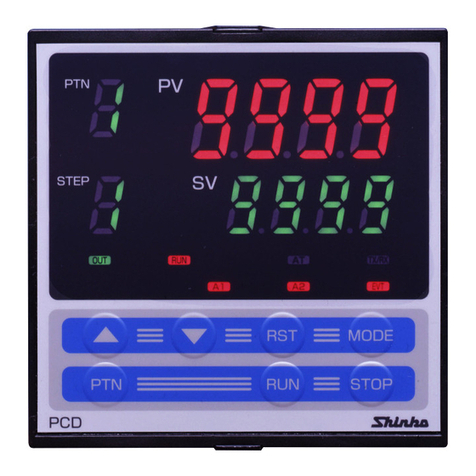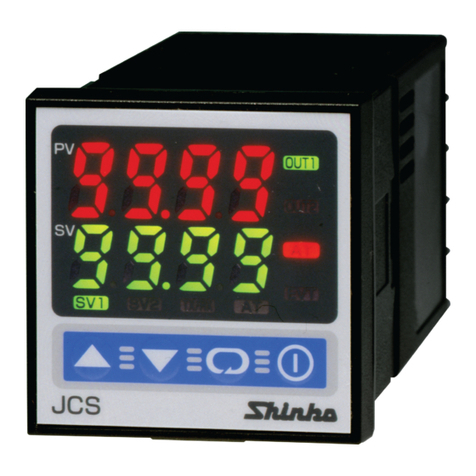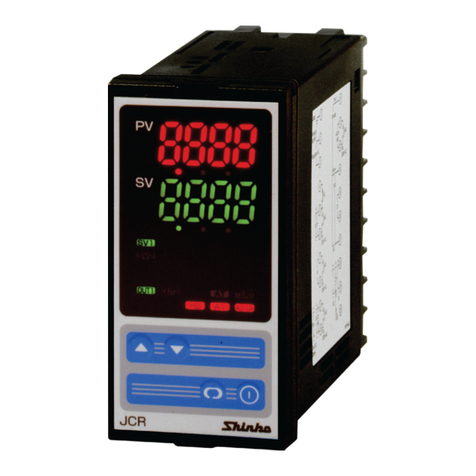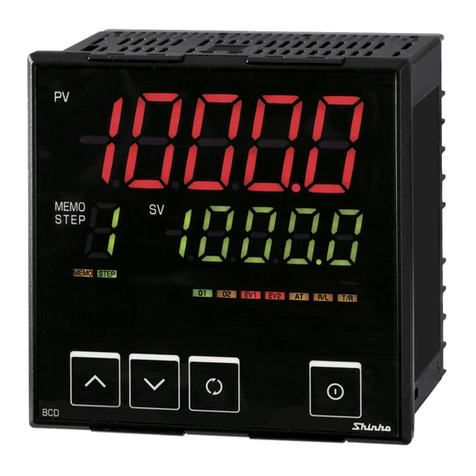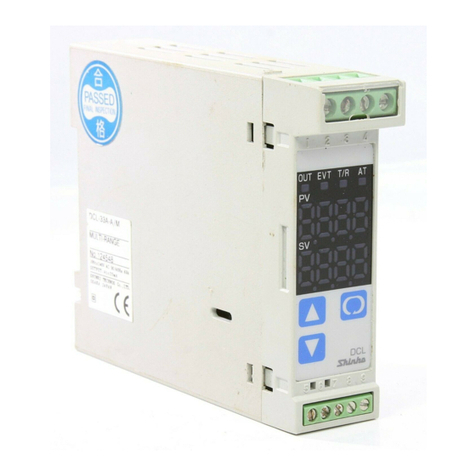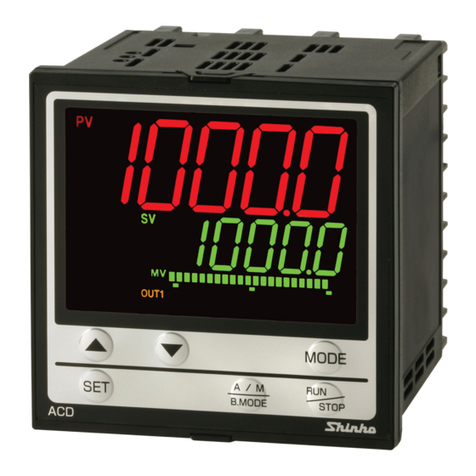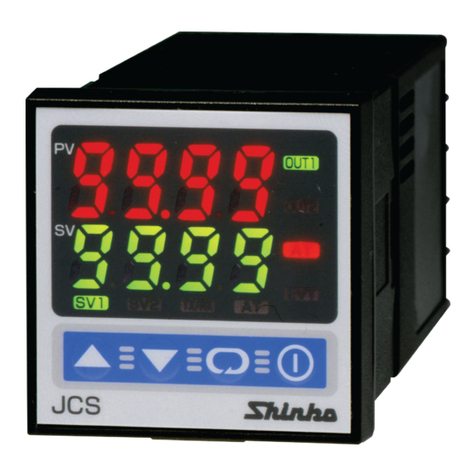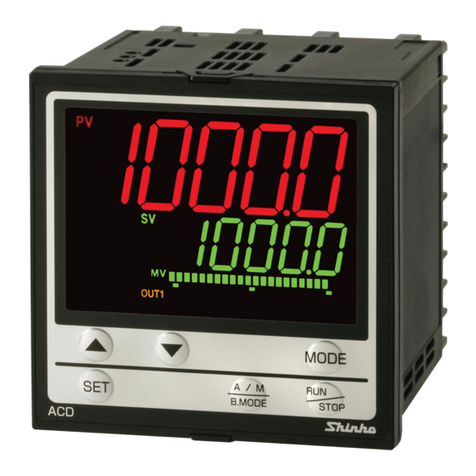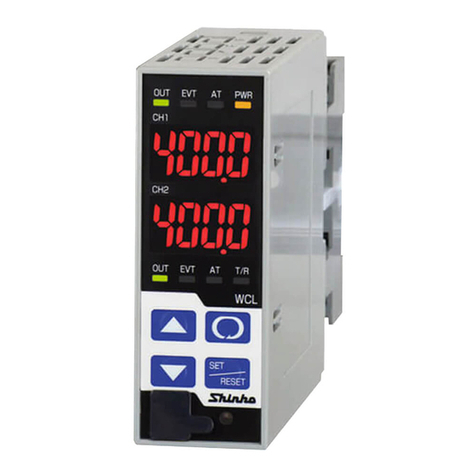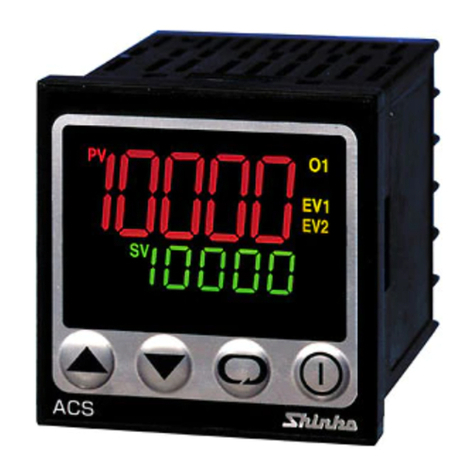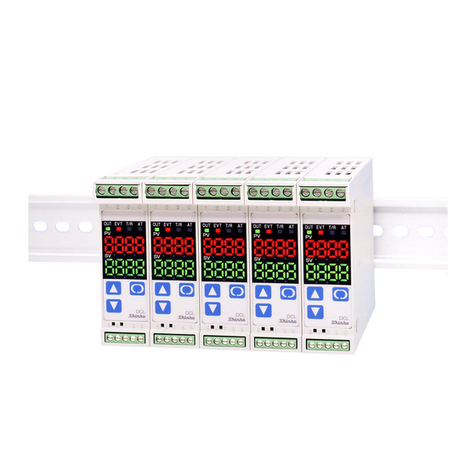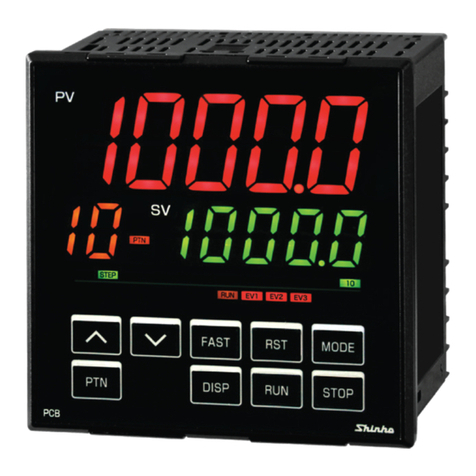
SHINKO TECHNOS CO., LTD. Head office: 2-5-1, Senbahigashi, Minoo, Osaka, 562-0035, Japan
TEL: +81-72-727-6100 FAX: +81-72-727-7006 URL: https://shinko-technos.co.jp/e/ E-mail: overseas@shinko-technos.co.jp
INSTRUCTION MANUAL Programmable Controller PCA1
No. PCA11JE42022.03
Thank you for purchasing our PCA1, Programmable Controller. This manual contains instructions for the mounting, functions, operations and notes when operating the
PCA1. To ensure safe and correct use, thoroughly read and understand this manual before using this instrument. To prevent accidents arising from the misuse of this
instrument, please ensure the operator receives this manual.
(Be sure to read these precautions before using our products.)
The safety precautions are classified into 2 categories: “Warning” and “Caution”.
Warning: Procedures which may lead to dangerous conditions and cause death or serious injury, if
not carried out properly.
Caution: Procedures which may lead to dangerous conditions and cause superficial to medium injury
or physical damage or may degrade or damage the product, if not carried out properly.
This instrument is intended to be used under the following environmental
conditions (IEC61010-1)]: Overvoltage category , Pollution degree 2
Ensure the mounting location corresponds to the following conditions:
• A minimum of dust, and an absence of corrosive gases
• No flammable, explosive gases
• No mechanical vibrations or shocks
• No exposure to direct sunlight, an ambient temperature of 0 to 50(32 to
122 ) (No icing)
• An ambient non-condensing humidity of 35 to 85 %RH (Non-condensing)
• No large capacity electromagnetic switches or cables through which large
current is flowing
• No water, oil or chemicals or the vapors of these substances can come into
direct contact with the unit
• Tak e note that the ambient temperature of this unit –
temperature of the control panel – must not exceed 50(122 ) if mounted
through the face of a control panel, otherwise the life of electronic components
(especially electrolytic capacitors) may be shortened.
• To prevent an electrical shock or fire, only Shinko or other qualified service personnel may handle the
inner assembly.
• To prevent an electrical shock, fire or damage to the instrument, parts replacement may only be
undertaken by Shinko or other qualified service personnel.
• To ensure safe and correct use, thoroughly read and understand this manual before using this
instrument.
• This instrument is intended to be used for industrial machinery, machine tools and measuring
equipment. Verify correct usage after purpose-of-use consultation with our agency or main office.
(Never use this instrument for medical purposes with which human lives are involved.)
• External protection devices such as protective equipment against excessive temperature rise, etc.
must be installed, as malfunction of this product could result in serious damage to the system or injury
to personnel. Proper periodic maintenance is also required.
• This instrument must be used under the conditions and environment described in this manual. Shinko
Technos Co., Ltd. does not accept liability for any injury, loss of life or damage occurring due to the
instrument being used under conditions not otherwise stated in this manual.
Caution with Respect to Export Trade Control Ordinance
To avoid this instrument from being used as a component in, or as being utilized
in the manufacture of weapons of mass destruction (i.e. military applications,
military equipment, etc.), please investigate the end users and the final use of
this instrument. In the case of resale, ensure that this instrument is not illegally
exported.
Specifications
Power supply voltage
100 to 240 V AC 50/60 Hz Allowable fluctuation:85 to 264 V AC
24 V AC/DC 50/60 Hz Allowable fluctuation:20 to 28 V AC/DC
Relay contact 1a 1b: Control capacity: 3 A 250 V AC (resistive load)
1 A 250 V AC (inductive load cos =0.4)
Electrical life: 100,000 cycles
0 to 50 (No icing, non-condensing)
Non-contact voltage (For SSR drive): 12 V DC 15%
35 to 85 %RH (Non-condensing)
Max. 40 mA (short circuit protected)
Thermocouple: Within 0.2% of each input span 1 digit
Direct current: 4 to 20 mA DC (Resolution: 12000)
However, R, S inputs, 0 to 200 (32 to 392 ): Within 6
Load resistance: Max. 600
Relay contact 1a: Control capacity 3 A 250 V AC (resistive load)
B input, 0 to 300 (32 to 572 ): Accuracy is not guaranteed.
1 A 250 V AC (inductive load cos =0.4)
K, J, E, T, N inputs, Less than 0 (32 ): Within 0.4% of
Electrical life: 100,000 cycles
One of EV3, EV4 terminals is a common terminal.
RTD: Within 0.1% of each input span 1 digit
Direct current, voltage inputs: Within 0.2% of each input
Open collector: Capacity 24 V DC
Relay contact 1a: Control capacity: 3 A 250 V AC (resistive load)
(DR option) 1 A 250 V AC (inductive load cos =0.4)
Electrical life: 100,000 cycles
Non-contact voltage (For SSR drive): 12 V DC 15%
(DS option) Max. 40 mA (short circuit protected)
Direct current: 4 to 20 mA DC (Resolution: 12000)
(DA option) Load resistance: Max. 600
Instruction manual excerpt: 1 copy
Input points: Max. 4 points (When C or C5 option is ordered:
Output (TA option): 4 to 20 mA DC (Load resistance: Max. 500 )
2 points) Circuit current when closed: Approx. 16 mA
(TV option): 0 to 1 V DC (Load resistance: Minimum 100 k )
External Dimensions (Scale: mm)
For detailed usage, refer to the Instruction Manual for the PCA1. Please download the full Instruction Manual from the Shinko Technos website.
https://shinko-technos.co.jp/e/ Support & Downloads Downloads Manuals
104.5 (when terminal cover is used)
Screw type mounting bracket
(sold separately)
和文は裏面をご覧下さい。
